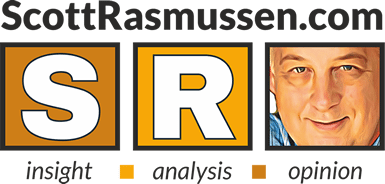There has been a lot of recent debate about how and when to re-open the U.S. economy. However, data from the latest Scott Rasmussen survey suggests that voters are interested in a broader discussion about how to re-open American society. The survey asked voters to prioritize the re-opening of various activities when the lockdown ends. For each activity, voters were asked whether it should happen right away or if it should be a second or third priority.
- Fifty percent (50%) said that allowing people to gather in small groups at someone’s home should happen right away.
- Thirty-five percent (35%) said that churches and other religious gatherings should be opened right away.
- Re-opening retail stores was also seen as a top priority by 35%.
- Thirty-one percent (31%) said the same about schools.
- Just 21% thought re-opening bars and restaurants should happen right away.
- Only 14% said the same about major league sports events and stadium concerts.
These results suggest that voters are interested in the broader questions of re-opening society, rather than narrow concerns about the economy. That’s not surprising since 23% say that the biggest impact they’ve felt from the pandemic is boredom, depression and isolation. Thirty percent (30%) cited loss of income as the biggest impact.
Additionally, even the re-opening of retail stores may reflect something more than economic concerns. Many people have experienced difficulties obtaining needed supplies during the pandemic—everything from food to health care items. Opening retail stores may be seen as a way to help address those concerns.
There are significant partisan differences in priorities. The most dramatic concerns the re-opening of churches and religious services. Forty-seven percent (47%) of Republicans believe that should be a top priority while only 29% of Democrats agree.
These results come from a survey of 1,200 Registered Voters was conducted by Scott Rasmussen using a mixed mode approach from April 9-11, 2020. Field work for the survey was conducted by RMG Research, Inc. Most respondents were contacted online while 217 were contacted using automated phone polling techniques. Certain quotas were applied to the overall sample and lightly weighted by geography, gender, age, race, and political party to reasonably reflect the nation’s population of Registered Voters. Other variables were reviewed to ensure that the final sample is representative of that population.


